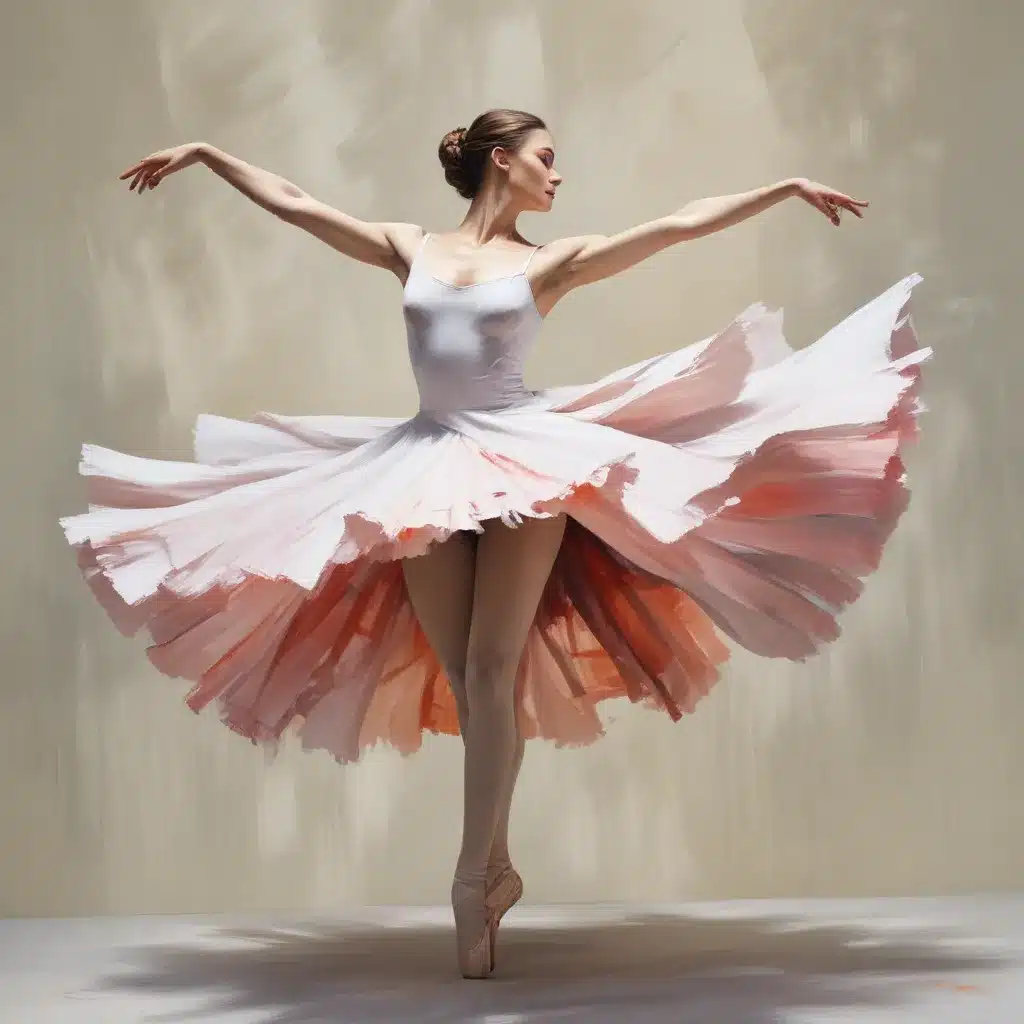
Unlocking the Artistic Language of Movement
Dance and painting share a deep, intrinsic connection – both are forms of artistic expression that use movement to captivate audiences and convey profound emotions. Just as dancers sculpt the air with their bodies, painters wield their brushes to create dynamic, expressive strokes that breathe life into the canvas. In this article, we’ll explore the art of “brushstroke ballet,” delving into the techniques and insights that can help you choreograph captivating movements in your paintings.
Painting as a Performative Art
At its core, painting is a performative art, a dance between the artist and their medium. Each brushstroke is a choreographed movement, a deliberate gesture that carries intention and meaning. Just as dancers use their bodies to tell a story, painters use their brushes to weave narratives, evoke feelings, and capture the essence of their subjects.
“A dancer’s movement is no different than these, think of them as painters who use their bodies as canvases and paintbrushes. Through movement, they create an artistic piece.” – Marc Buhagiar
To fully appreciate the performative nature of painting, it’s essential to approach the canvas with the same mindset as a dancer preparing for a performance. Visualize the movement, plan the sequence, and let your brushstrokes flow with intentionality and grace.
Mastering the Brushstroke Vocabulary
Just as dancers have a rich vocabulary of movements, from graceful arabesques to powerful leaps, painters have an extensive repertoire of brushstrokes to explore. Understanding and practicing these fundamental brushstroke techniques will empower you to create captivating compositions.
Here are some key brushstroke types to master:
- The Expressive Stroke: Bold, energetic brushstrokes that convey a sense of movement and emotion.
- The Delicate Touch: Feathery, feathered strokes that add delicacy and softness to your painting.
- The Impasto Gesture: Thick, textured strokes that create a sense of depth and tactility.
- The Calligraphic Line: Fluid, rhythmic strokes that evoke a sense of grace and elegance.
- The Stippled Accent: Delicate dots and dashes that add nuance and visual interest.
Experiment with these various brushstroke techniques, and pay attention to how they interact with one another on the canvas. Observe how the rhythm, tempo, and weight of each stroke can contribute to the overall choreography of your painting.
Cultivating Kinesthetic Awareness
Developing a strong kinesthetic awareness – the ability to sense and control the movement of your body – is crucial for creating captivating brushwork. Approach your painting process with a dancer’s mindset, focusing on the physical sensations and spatial awareness that guide your movements.
“Every action, every movement, every look, has a particular purpose in the grand scheme of things.” – Marc Buhagiar
As you paint, be mindful of the position of your body, the grip on your brush, and the flow of your strokes. Experiment with different body positions and brushwork techniques to find what feels most natural and expressive.
Choreographing the Composition
Just as dancers meticulously plan their movements to create a cohesive, visually stunning performance, painters must carefully choreograph the composition of their artwork. Consider the rhythm, tempo, and dynamics of your brushstrokes, and how they interweave to form a harmonious whole.
“Think of a painter. A painter generally paints with certain intent; same goes for writers and other artists. A dancer’s movement is no different than these, think of them as painters who use their bodies as canvases and paintbrushes.” – Marc Buhagiar
Experiment with different compositional structures, such as diagonal lines, circular rhythms, or asymmetrical balances, to create a sense of movement and energy. Pay attention to the flow of your brushstrokes, guiding the viewer’s eye through the painting with the same intentionality as a choreographer guiding an audience through a dance performance.
Embracing Spontaneity and Improvisation
While planning and structure are essential, the true magic of painting often emerges from moments of spontaneity and improvisation. Just as dancers must be able to adapt to unexpected situations and embrace the thrill of the moment, painters should be willing to let go and allow their brushstrokes to dance freely across the canvas.
“Movement is not random at all, but rather is imbued with meaning and intention.”
Embrace the unexpected, and be open to letting your brushwork evolve organically. Celebrate the happy accidents and serendipitous moments that arise, as they can often lead to the most captivating and expressive results.
Cultivating Artistic Connections
As you continue to develop your skills in the “brushstroke ballet,” seek out opportunities to connect with other artistic disciplines. Attend dance performances, observe the movements of the dancers, and consider how those kinetic experiences might inform your painting process. Likewise, explore the ways in which your own painting practice can inspire and inform other art forms, creating a rich, cross-pollinating tapestry of artistic expression.
“Dance, the rhythmic movement of the body, transcends the boundaries of language and culture. Beyond its physicality, dance is a powerful form of art that speaks directly to the soul.”
By embracing the performative nature of painting and cultivating a deep appreciation for the art of movement, you can unlock new realms of creative expression, captivating your audience and yourself in the process.
So, grab your brushes, and let the brushstroke ballet begin – a dance of color, texture, and emotion, where the canvas becomes your stage, and the possibilities are endless.